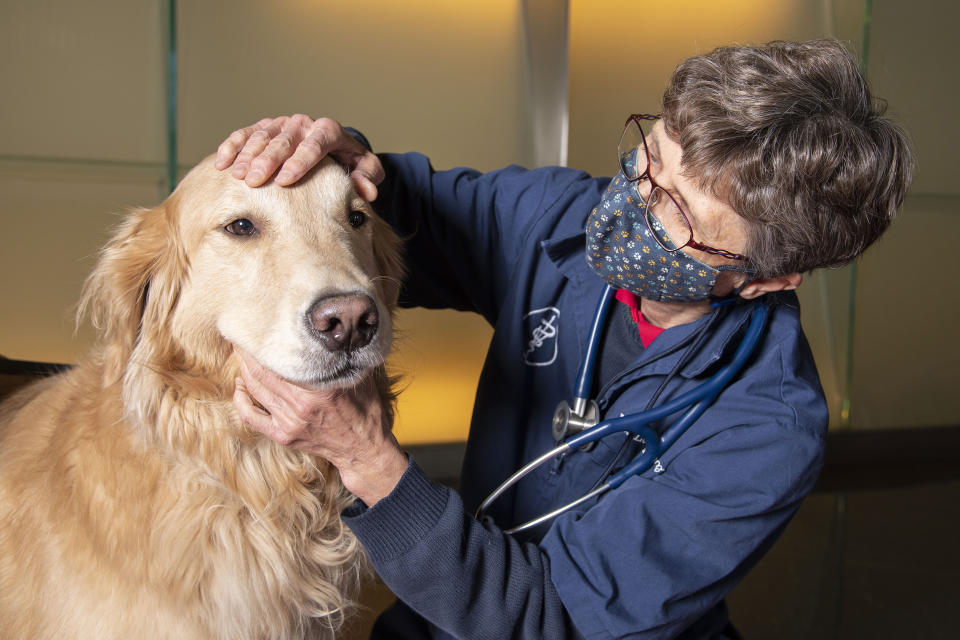Valley fever, historically found only in the Southwest, is spreading. It can have devastating consequences.
Doctors couldn’t figure out what was wrong with Devin Buckley.
It was February 2018, and the previously healthy 18-year-old found that he couldn’t walk to the bathroom without becoming winded. That was in addition to the rapid weight loss, stomach problems and extreme fatigue that seemed to come out of nowhere.
The campus health center at the University of Arizona in Tucson, where Buckley was enrolled as a freshman, had no answers. Neither did anyone at urgent care.
Buckley was home in Chicago for spring break when he wound up in the intensive care unit, struggling to breathe. It was there that he was finally diagnosed with Valley fever, after a family friend suggested the doctors test for it.
“It blew my mind that something so serious could be not known,” Buckley, 24, said. “When I first got diagnosed, the word cancer was going around with some of the doctors — like they were screening me for that. So it just goes to show you how serious of a disease it is if doctors seeing it think the first thing I have is cancer.”
Valley fever is an infection caused by breathing in spores of the fungus coccidioides. The spores can survive through heat and drought, lingering in the soil. When the dirt is disturbed — through construction, wind or even walking — the spores can be lofted into the air.

The fungus is endemic to the hot, dry soils of the Southwest; 97% of all U.S. cases of Valley fever are reported in Arizona and California, according to the California Department of Public Health.
But that could change: Fungal infections, including Valley fever, are increasingly being diagnosed outside of their usual ranges. One study in the journal GeoHealth projected that, due to climate change, the range of Valley fever could spread east, through the Great Plains and north, to the Canadian border, before the end of the century.
“As the temperatures warm up, and the western half of the U.S. stays quite dry, our desert-like soils will kind of expand and these drier conditions could allow coccidioides to live in new places,” said Morgan Gorris, who led the GeoHealth study while at the University of California, Irvine, and is now a staff scientist at the Los Alamos National Laboratory.
A 'tremendous spectrum' of disease
Around 20,000 cases of Valley fever were reported in 2019, but the Centers for Disease Control and Prevention says this is likely an underestimate. While easily diagnosed with a blood test, Valley fever has long been misdiagnosed or underdiagnosed due to lack of knowledge about the disease by both the public and physicians.
The majority of people with Valley fever may never know they have it. Its symptoms often look similar to a respiratory virus infection: fatigue, cough, fever, shortness of breath and muscle aches.
“If you see a patient with pneumonia, that either lives in the Southwest or has traveled to the Southwest, then Valley fever needs to be in what we call the differential diagnosis, meaning it’s one of the things that we have to think about,” said Dr. Royce Johnson, the medical director of the Valley Fever Institute at Kern Medical in Bakersfield, California.
In 5% to 10% of cases, the infection can lead to serious, long-term problems in the lungs, according to the CDC.
“It definitely has a tremendous spectrum. You know, it ranges from people who breathe in the spores really have no symptoms but develop immunity,” said Dr. George Thompson, an infectious disease specialist at the University of California, Davis.“The other end of the spectrum is people with fulminant infection, meningitis, or multisite dissemination, that is, it’s outside of lungs in multiple different sites in the body.” Fulminant infection means the illness comes on rapidly and severely in an otherwise healthy person.
“The vast majority are somewhere in between, but they still have a subacute illness,” he said. “They’re sick for weeks to months, you know, with cough, fatigue, fever, chills. So it’s still a significant disease.”
Valley fever can be difficult to treat; some patients need to take antifungal medications for months or years, which can come with uncomfortable side effects such as hair loss, chapped lips and dry skin.
In the years after Buckley was diagnosed, the disease spread from his lungs to his spine and legs. He’s been placed on a ventilator three times. The last time, in 2021, was the longest — he stayed on the ventilator for two weeks.

“The ventilator was on 100% at one point. It was breathing for me,” he said. “They were telling my mom, prepare for me not to be here.”
Buckley has relearned how to walk, feed himself and accomplish basic daily tasks, but he’s still not out of the woods. His life is radically different from what it was like before he got sick, filled with doctor’s appointments, surgeries and hospital stays.
Hope on the horizon
Scientists have been trying to develop a vaccine for Valley fever since the 1960s, according to the CDC. In the 1980s, one candidate was eventually tested in humans, but it didn’t work well.
But in recent years, researchers at the University of Arizona College of Medicine in Tucson have developed a vaccine that’s highly effective in dogs. Dogs, like humans, are susceptible to Valley fever.
The two-dose vaccine uses a version of the coccidioides fungus that’s genetically tweaked so it can’t cause disease, but can still train the immune system to recognize and respond to future infections.
The vaccine could be approved by the U.S. Department of Agriculture for use in dogs by early 2024. If so, it would be the first time the U.S. has approved a vaccine to protect against a fungal infection in animals or humans.

Dr. John Galgiani, director of the Valley Fever Center for Excellence at the University of Arizona College of Medicine, worked on the vaccine research in dogs. He’s now focused on getting the vaccine into clinical trials for humans.
“I’m really quite hopeful,” he said. “In my view, right now, we do have a candidate that deserves to be evaluated and I think will probably be effective, and we’ll be using it.”
Still, an approved Valley fever vaccine for humans is years away. If all goes according to plan — which doesn’t always happen in the scientific process, Galgiani noted — the earliest he sees this vaccine available for humans is eight years.
But experts say now is the time to build on the momentum of the research to move vaccine development forward, before Valley fever reaches even more people in the country.
“I think fungi are really the coming superbugs. I think they’re really the ones that are going to be problematic over the next decade. And Valley fever is going to be a key part of that,” said Thompson of UC Davis. “They are really here to stay. This battle is sort of just beginning.”
Follow NBC HEALTH on Twitter & Facebook.
This article was originally published on NBCNews.com

